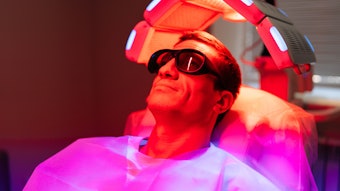
The skin barrier, our bodies’ first line of defense, is essential for maintaining overall health including the skin. Understanding the components of the skin barrier is necessary to treat the skin effectively. The skin barrier not only defines the health and appearance of the skin but also influences how it reacts to treatments and products. Let’s delve into the vital role of the skin barrier, its impact on various skin conditions, and how to support and enhance its function to achieve optimal skin care results.
The skin barrier performs many vital functions; think of it as our shield against environmental risks. It protects the body from physical, chemical and biological threats. The skin barrier prevents the penetration of pathogens, allergens, and toxins protecting from potential damage. It also can detect and remove harmful microorganisms with antimicrobial peptides, immune cells and the microbiome. The barrier regulates water loss in the body to maintain hydration. The skin is also a sensory organ allowing us to detect temperature and pain to avoid injury to environmental changes. These functions are all necessary to maintain the health of the body and the skin.
Structure
The skin barrier consists of several components that ensure it functions properly. Corneocytes, flattened dead cells often referred to as ‘bricks,’ form the primary structure of the barrier. The corneocytes are embedded in the lipid matrix, known as the ‘mortar’ since it holds cells together and maintains the barrier’s integrity. Other essential elements include filaggrin, natural moisturizing factor, corneodesmosomes, the acid mantle, and the microbiome. Understanding how each of these components functions and interacts is key to comprehending the overall operation of the skin barrier.
Related: A Better Barrier With Corneotherapy
Corneocytes
Corneocytes are the primary structural cells of the skin barrier playing a pivotal role in its function and integrity. These are cells that began as keratinocytes and went through the process of differentiation. Keratinocytes are the primary cell of the epidermis created in the basal cell layer. As the keratinocyte makes its way up through the layers of the epidermis, it goes through a series of changes. In the stratum granulosum, cells start to lose their organelles and nuclei while flattening to form corneocytes. The tough surface of the skin created by the corneocytes allows it to withstand physical or mechanical stresses including UV exposure.
Lipid Matrix
The lipid matrix of the skin barrier, primarily located in the stratum corneum, is a complex and organized structure crucial for maintaining skin hydration and protecting against environmental aggressors. It is composed of ceramides, free fatty acids and cholesterol. These lipids are arranged in a lamellar configuration. This organization forms a dense, cohesive barrier that prevents excessive water loss and shields the underlying tissues from harmful substances and pathogens. The integrity and function of this lipid matrix are essential for healthy skin, as disruptions can lead to conditions such as dryness, irritation, and increased susceptibility to infections
Natural Moisturizing Factor
Natural moisturizing factors (NMFs) are crucial for maintaining the barrier’s hydration and function. NMFs are hydrophilic substances found primarily within corneocytes. They are made up of amino acids, urea, lactate, and pyrrolidone carboxylic acid. They are derived from a breakdown of filaggrin, an essential protein in the skin. The primary role of NMFs is to attract and retain water from the atmosphere and deeper layers of skin. This keeps the stratum corneum hydrated, which is vital for overall barrier function. Environmental exposure and improper skin care can deplete NMFs leading to dry, flakey, and irritated skin.
Filaggrin
Filaggrin is a protein in the skin barrier that is necessary for maintain healthy skin. It contributes to the structure and function of the stratum corneum. Filaggrin is synthesized by profilaggrin, a precursor protein found in the stratum granulosum. Filaggrin binds to keratin intermediate filaments in keratinocytes. This causes the keratin filaments to form dense, tight bindles that flatten and strengthen the corneocyte. During the transition from keratinocyte to corneocyte, filaggrin is degraded into smaller fragments including amino acids. These amino acids make up the NMF which is needed for hydration and elasticity. Mutations or deficiencies in filaggrin lead to an impaired barrier resulting in inflammatory skin conditions including eczema.
Acid Mantle
The acid mantle is a thin slightly acidic film on the skin’s surface. It is made up of sebum, sweat, fatty acids, lactic acid and amino acids. The acidic pH of 4.5 to 5.5 inhibits the growth of harmful microbes to protect against infection. The pH of the acid mantle is also needed for enzymes to function properly. Various enzymes support cell turnover and help form the lipids of the barrier. Disruptions to the acid mantle can lead to a compromised barrier and eventually skin ailments.
Microbiome
The microbiome is a key part of the skin barrier. It is a community of microorganisms including bacteria, fungi, viruses, and mites that live on the surface of the skin. They are responsible for preventing pathogenic microorganisms from causing harm. The beneficial microorganisms of the microbiome can increase lipid production as well as maintain the skin’s acid mantle. When there is an imbalance in the microbiome, it can lead to sensitivity, infections, and inflammatory skin conditions.
Abnormalities from Impaired Skin Barrier
Eczema or Atopic dermatitis
Eczema is a chronic inflammatory skin condition that results in red, itchy, inflamed skin. An impaired barrier can not only exacerbate eczema but can also trigger it. When the barrier is compromised allergens, pathogens, and irritants can penetrate more easily. Due to the penetration of harmful substances, there is often an increased immune response which exacerbates inflammation and itching. There is evidence that a filaggrin deficiency from a mutation in FLG gene is associated with eczema. In those with eczema, there is often an imbalance in the microbiome with decreased beneficial bacteria and increased pathogenic bacteria.
Psoriasis
Psoriasis Is caused by a rapid proliferation and abnormal differentiation of keratinocytes leading to the formation of thick, scaly skin with inflammation. Mutations or variations in certain genes involved in integrity of the skin barrier are often shown in psoriasis. There is also a reduction in ceramides and changes in other lipids leading to increased TEWL and the possible penetration of allergens and irritants which also trigger immune cells. Microbiome imbalance such as an abundance of streptococcus species have also been associated with psoriasis flares. Reducing inflammation, increasing hydration, and managing lifestyle habits are all important for managing psoriasis symptoms.
Acne
If the barrier is impaired the sebaceous glands may try to overcompensate for the dehydration by producing more oil. The lipid composition Is often off in those prone to acne. There is a deficiency in ceramides which can weaken the barrier function. This can also lead to abnormal hyperkeratinization resulting in an accumulation of dead skin and oil that forms a mirocomedone. This leaves a breeding ground for Bacteria, especially c. acnes. C. acnes is a normal part of the microbiome, when the barrier is impaired, it can cause an overgrowth. The abundance of specific c. acnes bacteria triggers an immune response leading to the production of inflammatory mediators. The combination of dead skin cells, excess lipids, inflammation, and bacteria are what make up acne lesions.
Rosacea
Rosacea is a chronic inflammatory skin condition characterized by redness and flushing. A key factor in the development and exacerbation of rosacea is the integrity of the skin barrier. When the barrier is altered it can result in trans epidermal water loss or TEWL; dehydration makes the skin more prone to irritation and inflammation. A healthy microbiome is also crucial for those with rosacea. Higher densities of demodex mites are often seen in rosacea and can trigger an inflammatory response. A compromised barrier can also lead to an overactive immune response increasing the production of antimicrobial peptides that promote inflammation.
Maintaining the Barrier
Maintaining and improving the skin barrier is vital for healthy, radiant skin. First, it is important not to strip the skin by over-cleansing or using harsh cleansers that can disrupt the lipid matrix. It is equally important to hydrate and moisturize. Humectant ingredients like hyaluronic acid, vitamin B5, glycerine, and urea are good options for promoting hydration. Moisturizers can include ceramides, fatty acids, and cholesterol to mimic the skin’s natural lipids. Other moisturizers like shea butter, squalane, and avocado oil are equally beneficial for locking moisture in. The use of sunscreen is mandatory since UV radiation can weaken the skin barrier. Gentle exfoliants can be useful but should be limited to one to two times a week. Caution should be taken with active ingredients, always introduce stronger ingredients like AHAs and retinoids slowly to reduce the chance of over stimulating the skin.
Promoting a healthy skin barrier can be done through lifestyle habits as well. Sufficient water and eating nutrient rich foods like fish, nuts, seeds, and colorful vegetables help to maintain and promote moisture. Stress impacts the barrier function of the skin and exacerbates inflammatory skin conditions including the previously mentioned. Adopting stress-reducing methods will have a healthy impact on the skin.
Understanding the impact of the skin barrier is necessary to providing effective skincare recommendations. A healthy skin barrier is essential for maintaining skin hydration, protection, and overall health. Estheticians can help by recognizing the factors that affect the barrier, identifying skin conditions linked to barrier dysfunction, and incorporating barrier-supporting ingredients and treatments. Remember, a strong skin barrier is the foundation of beautiful, healthy skin.
References
1. https://www.ncbi.nlm.nih.gov/pmc/articles/PMC9654002/
2. https://pubmed.ncbi.nlm.nih.gov/19043850/
3. https://www.sciencedirect.com/book/9780323847445/atopic-dermatitis-inside-out-or-outside-in
4. https://pubmed.ncbi.nlm.nih.gov/24262790/
5. https://doi.org/10.1007/s12272-021-01305-x
6. https://doi.org/10.1590/abd1806-4841.20164412
7. https://www.ncbi.nlm.nih.gov/pmc/articles/PMC7875671/










